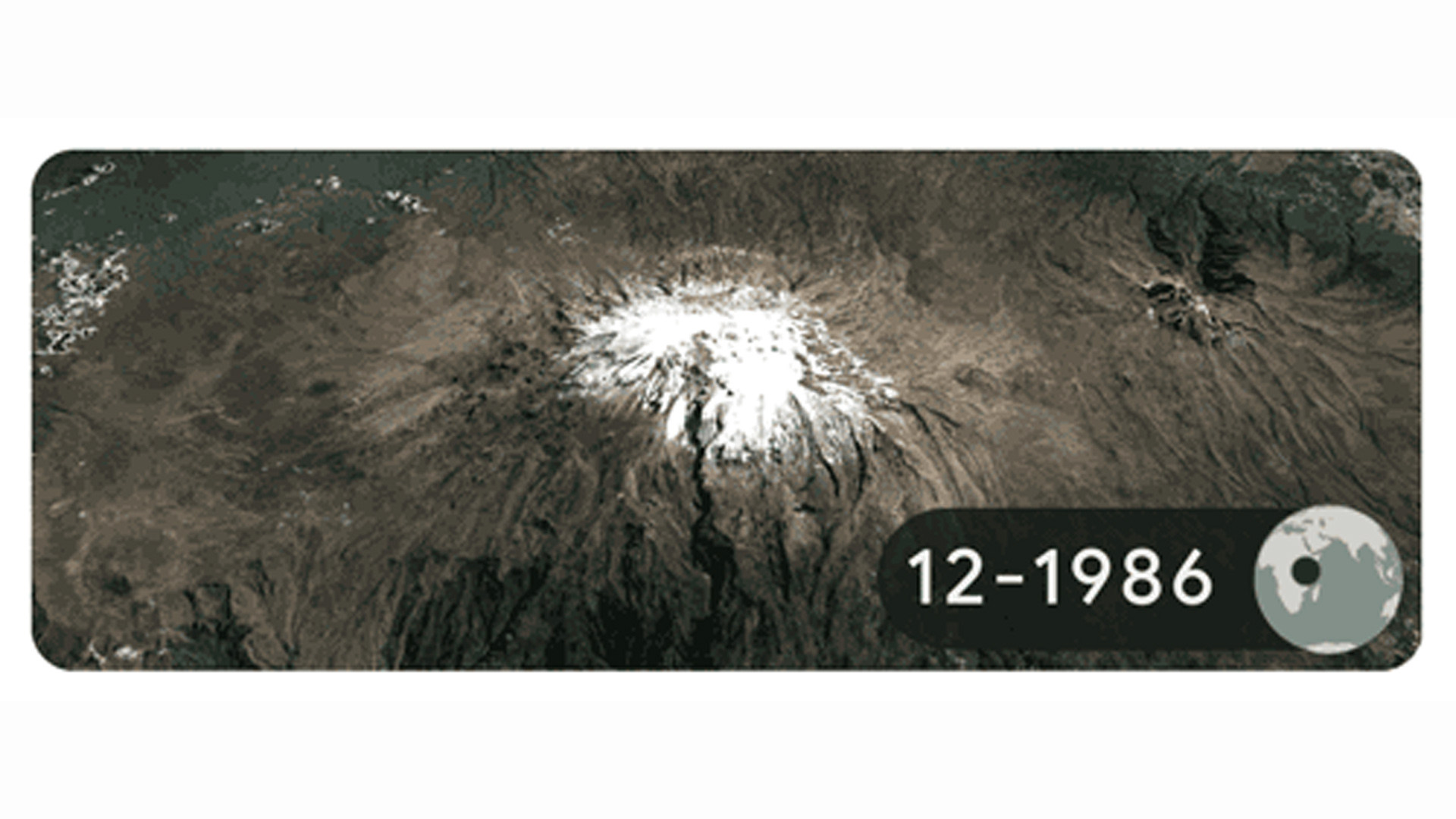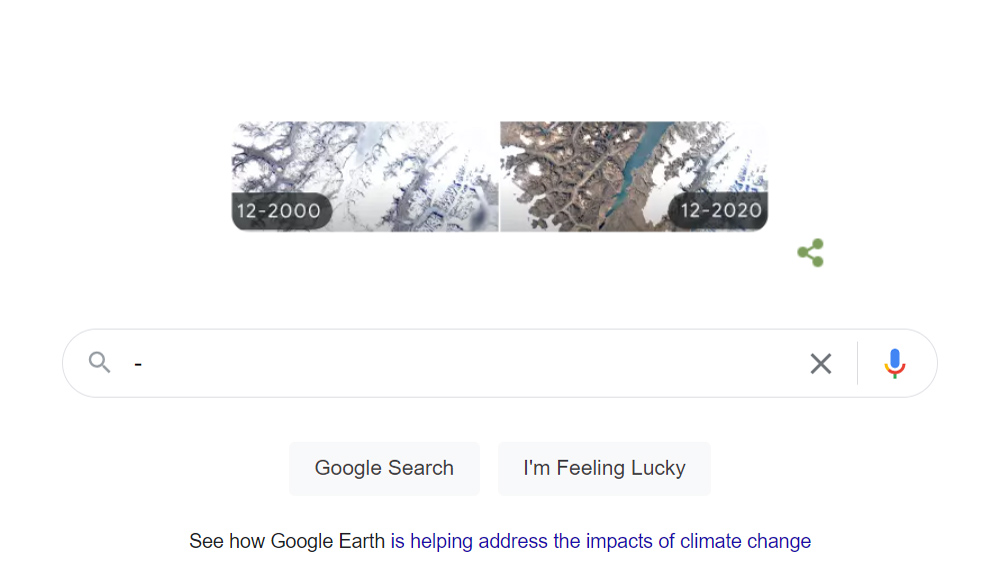Google's Earth Day celebration reminds us of state of ailing planet
Sequences of decades-worth of satellite images reveal scale of glacier melting and forest destruction.

Earth Day is celebrated on April 22 every year since 1970. Year on year, the celebration is getting more somber. This year, internet giant Google reminds us of the increasingly fragile state of the planet in four new Doodles featuring images of environmental destruction across the globe.
In time-lapse sequences consisting of Google Earth satellite images taken over several decades, the Earth Day Doodles reveal the scale of glacier retreat on the summit of Tanzania's iconic Mount Kilimanjaro, as well as that covering parts of Greenland's southern Sermersooq region.
The once trademark snow cap of the 19,340-feet-high (5,895 meters) Mount Kilimanjaro has shrunk to less than 10% of its early 20th-century extent and might completely disappear by the end of this decade, according to estimates.
Related: 10 devastating signs of climate change satellites can see from space
The volcanic mountain, Africa's highest peak, is a popular destination for adventure seekers, but in recent years, conservationists have spoken about rapid changes to its ecosystems, namely, the formation of wetlands due to the thawing ice.
Greenland's glaciers have been suffering a similar fate, mostly due to the combination of warming ocean waters and rising air temperatures, according to NASA.
But it's not just ice melting that portends the climate disasters the planet may be heading for. In Germany, swaths of the Harz Forest Natural Park have fallen prey to bark beetle infestation since 1995, the Google images show.
Get the Space.com Newsletter
Breaking space news, the latest updates on rocket launches, skywatching events and more!
The final Doodle points at one of the tragedies emblematic of the climate change struggle of the oceans — dying corals. A sequence of images of Australia's Great Barrier Reef provided by the Ocean Agency reveals speedy coral bleaching that struck a section of the reef near Lizard Island between March and May 2016.

Humankind has been slow to jump into action to thwart the progressing climate change despite years of alarm bells from the scientific community. According to a report released by the European Copernicus climate monitoring program today, concentrations of carbon dioxide and methane, the two most worrisome greenhouse gasses, have yet again hit new record levels in 2021, having risen by 2.3 parts per million and 16.5 parts per billion, respectively.
In Europe, average temperatures are already 3.6 degrees Fahrenheit (2 degrees Celsius) above preindustrial levels, Copernicus said. That is 0.9 degrees F (0.5 degrees C) more than the limit of 2.7 degrees F (1.5 degrees C) set by the international community to avoid the more disastrous environmental consequences. Globally, average temperatures are currently about 2.1 degrees F (1.2 degrees C) above pre-industrial levels, Copernicus said.
Related: What is the average temperature on Earth?
Follow Tereza Pultarova on Twitter @TerezaPultarova. Follow us on Twitter @Spacedotcom and on Facebook.
Join our Space Forums to keep talking space on the latest missions, night sky and more! And if you have a news tip, correction or comment, let us know at: community@space.com.

Tereza is a London-based science and technology journalist, aspiring fiction writer and amateur gymnast. Originally from Prague, the Czech Republic, she spent the first seven years of her career working as a reporter, script-writer and presenter for various TV programmes of the Czech Public Service Television. She later took a career break to pursue further education and added a Master's in Science from the International Space University, France, to her Bachelor's in Journalism and Master's in Cultural Anthropology from Prague's Charles University. She worked as a reporter at the Engineering and Technology magazine, freelanced for a range of publications including Live Science, Space.com, Professional Engineering, Via Satellite and Space News and served as a maternity cover science editor at the European Space Agency.









